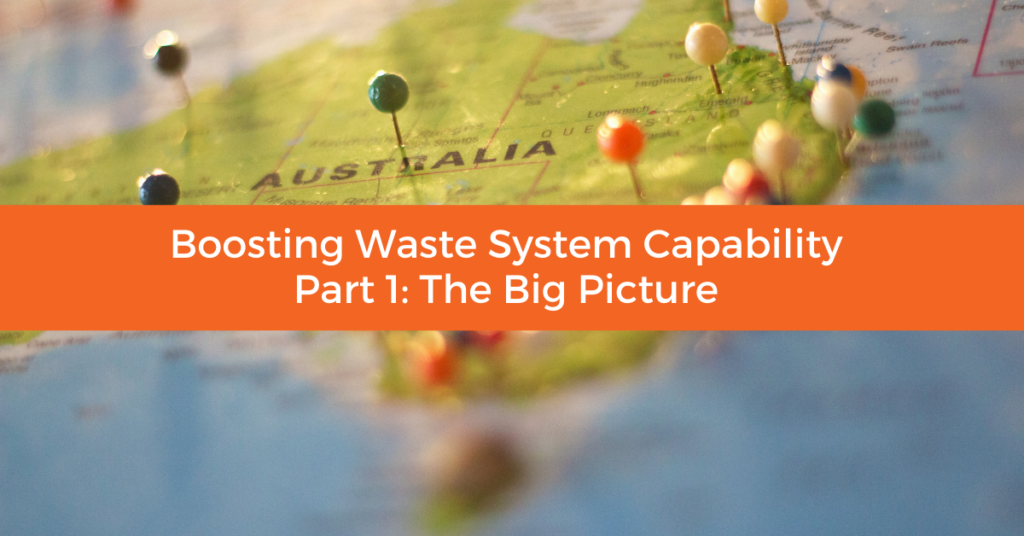
‘Our domestic waste and recycling sector needs to be futureproofed and resourced to deliver the waste reduction and recycling outcomes expected by the community’ – COAG – Inside Waste April/May 2020
With COAG recently committing to a historic waste response strategy along with the commonwealth’s commitment to improving the quality of waste streams, many Australian councils, local government administrators and waste facilities need to start looking at what can be done at a facility level to improve the waste landscape in Australia.
Many agree that an overall Australia-wide strategy is needed, but how can we have a waste strategy in Australia to improve waste streams and recycling when no two councils have the same standard of data structure? Boosting your waste system capability at a facility and council level is a great place to start.
But why does change need to occur and how can your facility and council make an impact by boosting facility waste system capabilities? To answer this question, we first need to take a look at the bigger picture.
Why Does the Australian Waste Landscape Need to Change?
The industry is currently sitting on the brink of one of the most important changes to the way waste is managed in Australia. The federal government has seen waste as a critical industry in urgent need of reshaping, and following this recent commitment by COAG, the importance of establishing a broader long-term change in Australia’s waste and recycling sector has been elevated even further.
This is a path that has to be taken and change must occur otherwise our country will be left at risk of ongoing stockpiling and illegal waste dumping, rising landfill rates and subsequent greenhouse gas emissions. Plus, we can’t forget that waste is a valuable resource, and it should be treated as such, but unfortunately in Australia, that value is not fully being realised.
What is the Solution?
The ultimate goal is for Australia to move towards applying circular economy principles to our waste landscape, as outlined in the 2018 National Waste Policy.
But what is a circular economy?
A circular economy is about moving Australia towards new ways of thinking about waste and the use of resources. It also builds on the idea of continually reusing, recycling and reprocessing materials. This will lead to:
- Supporting a better and repeated use of our resources
- Retaining the value of materials in the economy for as long as possible
- Reducing the unsustainable depletion of natural resources and the resulting impact on the environment.
Moving towards a circular economy also comes with a significant positive economic impact and job creation. For example, according to the 2018 National Waste Policy, for every 10,000 tonnes of waste that is recycled, 9.2 jobs are created (compared with 2.8 jobs if the same amount of waste was sent to landfill). Better waste management also contributes towards reduced health and environmental problems and prevents pollution of our land and oceans.
We all have a role to play in helping Australia move towards a more circular economy that eliminates waste and ultimately improves economic, social and environmental outcomes.
What Role do Local Councils and Waste Facilities Play in This Change?
With demands on state and local councils along with waste facilities to do better to meet the growing calls for change, we need to take a good look at the waste management system currently in play, understand what is working, what is not and identify areas of improvement.
Many councils and waste facilities across the country are already beginning to utilise the best and most current waste technology in the industry to improve their processes, data quality and overall operations to meet the changing industry needs.
Here at Mandalay, our waste software has been created to help councils and facilities perfect and refine the waste landscape by boosting waste system capabilities. A multitude of products can be utilised and integrated to deliver the processes, data and outcomes you need to succeed in the changing Australian waste landscape.
Want to Learn More?
- Read part 2 of our series where we take a deeper dive into the workings of your facility infrastructure and data in relation to the waste ecosystem.
- Read part 3 of our series to see how your data can be analysed and the type of insights that can be gained to inform decisions that will have a real impact.
- Or contact our team at Mandalay to discuss how our waste software can be best utilised at your facility.


